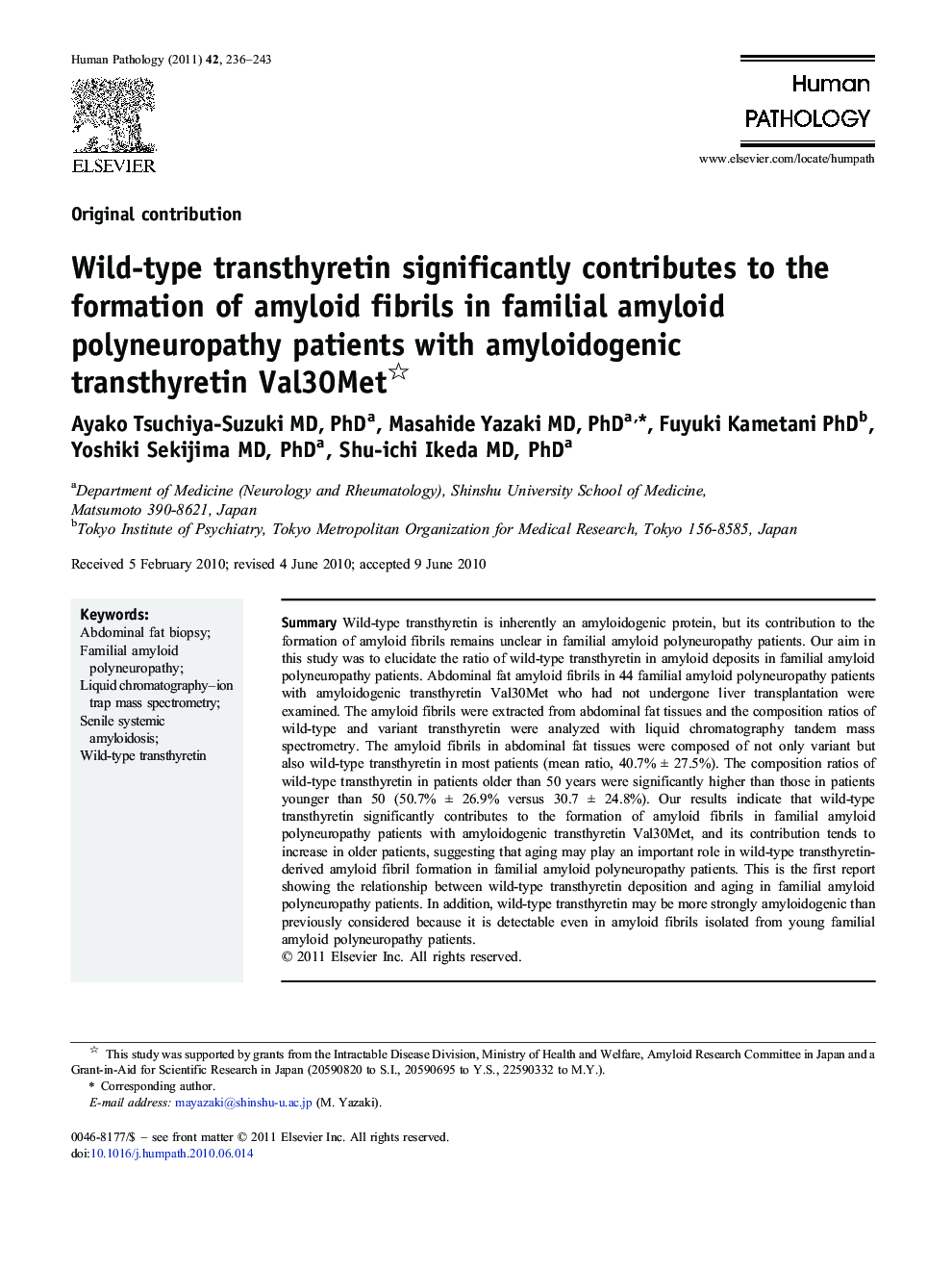| Article ID | Journal | Published Year | Pages | File Type |
|---|---|---|---|---|
| 4133776 | Human Pathology | 2011 | 8 Pages |
SummaryWild-type transthyretin is inherently an amyloidogenic protein, but its contribution to the formation of amyloid fibrils remains unclear in familial amyloid polyneuropathy patients. Our aim in this study was to elucidate the ratio of wild-type transthyretin in amyloid deposits in familial amyloid polyneuropathy patients. Abdominal fat amyloid fibrils in 44 familial amyloid polyneuropathy patients with amyloidogenic transthyretin Val30Met who had not undergone liver transplantation were examined. The amyloid fibrils were extracted from abdominal fat tissues and the composition ratios of wild-type and variant transthyretin were analyzed with liquid chromatography tandem mass spectrometry. The amyloid fibrils in abdominal fat tissues were composed of not only variant but also wild-type transthyretin in most patients (mean ratio, 40.7% ± 27.5%). The composition ratios of wild-type transthyretin in patients older than 50 years were significantly higher than those in patients younger than 50 (50.7% ± 26.9% versus 30.7 ± 24.8%). Our results indicate that wild-type transthyretin significantly contributes to the formation of amyloid fibrils in familial amyloid polyneuropathy patients with amyloidogenic transthyretin Val30Met, and its contribution tends to increase in older patients, suggesting that aging may play an important role in wild-type transthyretin-derived amyloid fibril formation in familial amyloid polyneuropathy patients. This is the first report showing the relationship between wild-type transthyretin deposition and aging in familial amyloid polyneuropathy patients. In addition, wild-type transthyretin may be more strongly amyloidogenic than previously considered because it is detectable even in amyloid fibrils isolated from young familial amyloid polyneuropathy patients.
